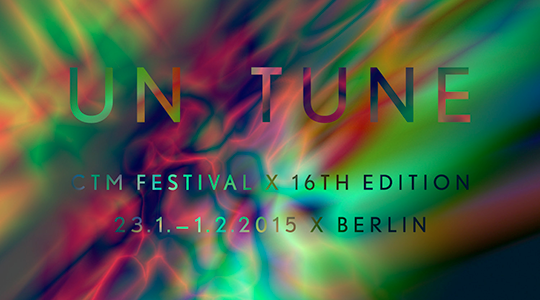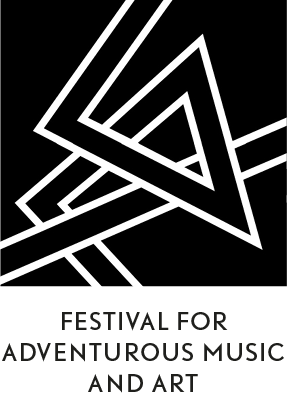Theme – Un Tune
CTM 2015 Theme


Through its Un Tune theme, CTM 2015 aims to engage with the direct bodily effects of frequencies, sound, and music as well as with their synergistic effects with other sensory stimuli. The festival will thus highlight, more than ever, the adventurous, exploratory side of music and art. Artistic experimentation with the affective and somatic effects of sounds and frequencies opens up possibilities of tuning and de-tuning the composite that interconnects body, matter, energy and (musical) machines – and of exploring our perception.
Sonic events – e.g. noises, sounds, music – are not perceived by the ear alone. Their effect upon the human body goes beyond the stimulation of the various sensory organs. Acoustic vibrations obtrude and invade the body and its tissues, and are processed not only at a conscious level but also unconsciously, triggering uncontrollable physiological and physic reactions.
Technological developments now give us the means with which to better understand and explore these and other affects. Such experimentation operates between antagonistic coordinates such as pleasure and displeasure, self-empowerment and the internalisation of control mechanisms, personal and collective experience, and the experience of the self as both subject and object.
With the discovery of electricity, sound recording, and electro-acoustics, the coupling of sound and sounding body is no longer inevitable, yet at the same time is rendered more intense than ever before. In the digital age, sound finally became fully autonomous: As a pure stream of information it is now amenable to any method of synthesis, transformation, or analysis without the involvement of a sounding body in the conventional sense. In return, artists today increasingly search for new ways to re-inject their own bodies and others back into electronic music, and evaluate new roles for the body in the field of sound.
At the same time, machines have themselves become part of our self-perception and of the perception of our environment. Distinctions between natural and anthropogenic sound sources have gradually eroded, joining human and non-human actants into one structure: a sonic landscape that is no longer purely natural nor merely a backdrop, but is always permeated by culture and technology.
In order to embrace such experiences, dissolution or loss of control in the form of a temporary disempowerment of the perceiver’s position as the listening subject is required. Through such decentralisation we become open to non-hierarchical connections between our surrounding sonic phenomena and allow ecological dimensions to enter the study of the affective potential of sound.
CTM 2015’s Un Tune theme thus shifts the focus from questions of music’s symbolic and cultural significance to questions of the use and functionality of sound and music as affective forces. Somewhere in between physics and cultural semantics, the theme moves from asking "what does music attempt to portray?" to "what effects do sound and frequencies have upon us?".
This questioning also further blurs the distinction between noise, sound, and music – a gradual development that was subject to much artistic practice of recent years and decades. In order to better grasp this larger view, the concept of "the sonic" has recently been proposed, as an overall category that transgresses the limits of the musical and the acoustic. The commonality of sound, vibration, light, and technical image lies in their equal condition as time-critical frequencies (Wolfgang Ernst).
CTM 2015 – Un Tune is concerned with "the sonic" in as broad a sense as possible. The affective potential of sound and music is clearly a focal point, yet it constitutes only one aspect of an investigation into the distribution, modulation, and perception of frequencies. In this spirit, the festival programme will highlight concerts and sound performances next to artistic experiments that explore couplings or exchanges between auditive, visual, and tactile experiences.
In the spectrum between bio-acoustics, field recordings, ambient, flicker, brainwave entrainment, binaural beats, biofeedback, psychoacoustics, neo-psychedelia, hypnotic repetition, noise, and sub-bass vibrations, Un Tune will present works by artists who explore the affective potential of frequencies, sound, and music, such as to address and disturb the human body in troubling and emphatic ways. The interaction between technological systems, immersive environments, and ritualistic practices opens up spaces of experience that temporarily destabilize our habitual states. Unusual fluctuations in space-time, new intensities of sensory experience, and new ways of perceiving create situations that transcend our usual state of being, and may unlock emancipatory potential.

